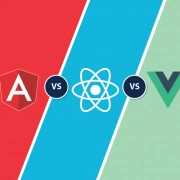The Ultimate Guide to New Features in F# 6
Quick Summary: This blog provides an overview of the key changes and improvements in F# 6, which can benefit both beginners and experienced F# developers.
Introduction
With its powerful functional-first features and steady evolution over the years, F# has become one of the most powerful programs available today. F# 6 introduces several exciting new features and enhancements that enhance the language’s position as a top choice for functional programmers.
Partnering with the best .Net services ensures robust, scalable, and secure software solutions. Harness the power of Microsoft .NET libraries for your project’s success and innovation.
In this blog, we’ll explore the key changes and improvements introduced in F# 6, highlighting how they can benefit both new and experienced F# developers. Also, please read our blog, OneOf In C#, to stay updated with the latest trends.
What’s new in F# 6?
Code in F# 6 now can optionally indicate that, if an argument is a lambda function, it is inline at call sites.
The goal of long-term language evolution is to remove any corner cases in the language that might surprise users or create unnecessary barriers to adoption.
Enhancing F#’s performance and interoperability with tasks
F sharp language most requested feature – and the most significant technical feature in this release – is to make authoring asynchronous tasks simpler, more performant, and more interoperable with other .NET languages like C#. Creating .NET tasks previously required using async {…} to create a task and then using Async.AwaitTask to execute it. Using F# net, it is possible to create and await tasks directly with the task […]
let readFilesTask (path1, path2) =
task {
let! bytes1 = File.ReadAllBytesAsync(path1)
let! bytes2 = File.ReadAllBytesAsync(path2)
return Array.append bytes1 bytes2
}
F# 5.0 already has task support through the TaskBuilder.fs and Ply libraries. F# 6 was heavily influenced by the authors of these libraries, both directly and indirectly. As well as directly contributing to F sharp programming language, these libraries have also been indirectly contributing to its design. In addition to some differences in namespaces and type inference, some type annotations may be necessary. The built-in support and these libraries implement namespaces and type-inference differently, so some type annotations may be necessary. Using these libraries in F# programming language still works if the correct namespaces are opened in each file and they are explicitly referenced.
The task is very similar to async tasks, both can be used.
Advantages to using task over async
There are several advantages to using task over async:
-Task performance has improved significantly.
-Stack traces and stepping are better methods for debugging tasks.
-It is easier to interact with .NET packages that expect or produce tasks.
There are a few differences to be aware of if you’re familiar with async:
– As soon as the first asynchronous yield has been reached, the task {…} is executed.
– A cancellation token is not propagated implicitly by task {…}.
– There is no implicit cancellation check in the task {…}.
– Asynchronous tail calls are not supported by task {…}. Use return to accomplish this! .. When no asynchronous yields intervene, recursively may result in stack overflows.
If you are interacting with .NET libraries that use tasks, you should consider using task{…} over async{…} in new code. Before switching to the next task[…], ensure that your code is reviewed if you are relying on the above characteristics of async[…].
We will work with the F# community in the coming months to make available two key optional packages using this feature:
The concept of F# async{…} is re-implemented with recommence code.
The recommence code implements asynchronous sequences asyncSeq{…}.
How expr[idx] simplifies learning F#
F# utilized expr.[idx] as indexing syntax up to and including F# 5.0. For indexed string lookups in OCaml, we used this syntax. Allowing the use of expr[idx] is based on repeated comments from persons learning F# or seeing F# for the first time that dot-notation indexing is an unnecessary deviation from the industry norm. F# does not need to diverge in this case.
Expr.[idx] does not generate a warning by default, so this change isn’t a breaking one. This modification emits some informational messages proposing code clarifications. Further informational messages triggers if necessary.
Making F# faster: Partial active pattern structural representations
F# includes the active patterns feature, which allows users to extend pattern matching in intuitive and powerful ways. We’ve enhanced that feature in F# 6 by adding optional struct representations for active patterns. This enables you to constrain a partial active pattern to return a value option by using an attribute:
[<return: Struct>]
let (|Int|_|) str =
match System.Int32.TryParse(str) with
| true, int -> ValueSome(int)
| _ -> ValueNone
It is necessary to use the attribute. The code does not change at usage sites. As a result, allocations have been reduced.
To make F# more consistent, use “as” patterns
The right-hand side of an “as” pattern can now be a pattern in F# 6. When a typing test assigns a stronger type to input, this is critical. Consider the following code.
type Pair = Pair of int * int
let analyzeObject (input: obj) =
match input with
| :? (int * int) as (x, y) -> printfn $"A tuple: {x}, {y}"
| :? Pair as Pair (x, y) -> printfn $"A DU: {x}, {y}"
| _ -> printfn "N ope"
let input = box (1, 2)
Revisions to the indentation syntax in F# to make it more consistent
The F# community has made several significant contributions to make the F# language more consistent in F# 6.
In F# 5.0, for example, the following was permitted:
let c = (
printfn "aaaa"
printfn "bbbb"
)
The following, however, was not (producing a warning)
Both are permitted in F# 6. F# becomes simpler and easier to understand as a result of this.
Conclusion
F sharp brings exciting new features and improvements, making it a top-tier functional programming language. From introducing compact records for memory optimization to clearer error messages and enhanced interoperability, F# 6 empowers developers to write more efficient and maintainable code.
F# 6 is a great update for the language that adds many new features and improvements. If you’re a fan of F# language, be sure to like, follow, and comment on this guide to stay up-to-date on the latest news and features.
FAQ
What is f#?
F# is a functional-first programming language developed by Microsoft. Furthermore, programming in f# runs on the .NET platform and is known for its strong support for functional and immutable programming paradigms.
What is f# used for?
F# programming language uses are incredible. F# is useful in various applications, including data analysis, scientific computing, web development, and building robust and maintainable software. Also, it provides strong support for functional programming and .NET integration.
Is f# dead?
No, F# is not dead. It has an active community and ongoing development, with updates and enhancements. It remains a valuable choice for certain domains and functional programming enthusiasts.
Is F# the same as C#?
No, F# is not the same as C#. While both are .NET languages, F# is a functional-first language focusing on immutability, whereas C# is a multi-paradigm language.
Is F# easier than C#?
The ease of learning and using F# or C# depends on one’s programming background and project requirements. Some find F#’s functional approach more concise for specific tasks, while C# is more versatile for general .NET development.












